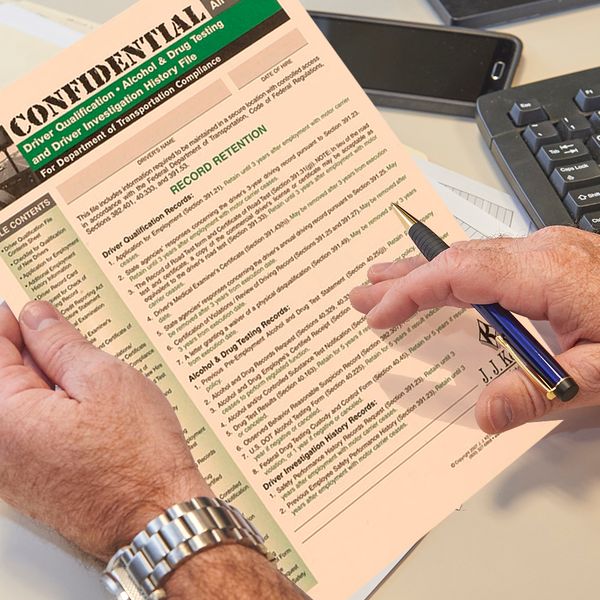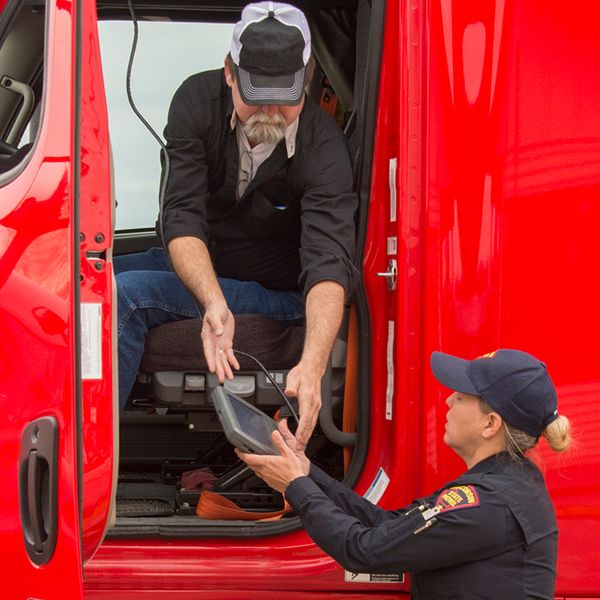3 tips to maximize the impact of MVR reviews
Annual reviews play a crucial role in ensuring the safety and compliance of commercial motor vehicle (CMV) drivers. At least once per year, carriers must review the motor vehicle record (MVR) and determine if their drivers meet the requirements for safe driving or are disqualified (e.g., expired license).
Go beyond the minimum of reviewing the MVR to verify that the driver is not disqualified. To avoid claims of negligent retention or negligent supervision, consider following these three tips:
1. Exceed the regulations.
Per 391.25, the carrier must consider any accidents or unsafe behavior on the MVR. The reviewer's name, the date, and a copy of the MVR go in the driver qualification file.
Disqualifying events are in 391.15 for all CMV drivers and in four tables in 383.51 for drivers who hold a commercial driver's license (CDL). Be sure to compare the MVR to these sections.
To exceed the regulatory minimums, review the driver's documented internal safety record and assess any unsafe factors such as hours-of-service infractions or triggered events from vehicle telematics or dash cams.
Then, answer these two questions:
1. Has the driver received the appropriate coaching, training, or discipline per the company's progressive discipline process?
2. Does the driver meet the company's hiring criteria?
Suppose a driver is in a crash and has not received the appropriate corrective action, or should not have been driving your vehicle due to their safety record being below hiring criteria. In that case, the company's potential liability increases and may result in negligence claims and an excessive verdict. If you would not hire the driver today, they should not be operating your CMV.
2. Use an expert to review MVRs.
Interpreting multiple states' MVRs can get quite complicated. There are two options:
1. Hire a third-party expert, or
2. Develop in-house expertise.
If you choose not to outsource, thoroughly train the person on each states' procedures for pulling records, including obtaining driver consent. Also, the individual must understand the American Association of Motor Vehicle Administrators (AAMVA) Code Dictionary (ACD) used by driver licensing authorities. These codes identify the type of driver convictions or the reasons for driver licensing withdrawals or suspensions.
For more information on the ACD, check out the link below:
The in-house expert must also understand and execute consistently the overall MVR and annual review policy.
Also consider having your expert assign values to MVR violations to generate a score to rank drivers at hire and for annual reviews. Compare the score to your hiring criteria threshold.
3. Adopt MVR monitoring to avoid surprises.
Relying on drivers to notify the carrier of violations or suspensions between annual MVRs can be risky. Annual MVRs create a gap during which bad things can happen without a carrier’s knowledge. Ignorance of loss of driving privileges or violations is not a defense during an audit or in a courtroom.
MVR monitoring can meet the annual MVR requirement and reduces the time from notification of unsafe behavior to corrective action. Monitoring involves two methods:
1. The carrier representative can log in to each state's system and "pull" the MVR, which can involve many states. The time it takes to monitor an entire fleet of driver records can quickly add up.
2. Some states offer “push” or employer notification services (ENS) for event triggers such as violations or license status changes.
Keys to remember: Annual reviews or MVR monitoring are critical not only for compliance but also to reduce the risk of negligence claims. A third-party service can save labor and may better provide expertise for MVR monitoring.



















































